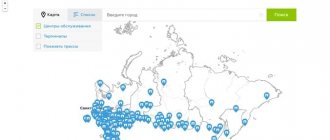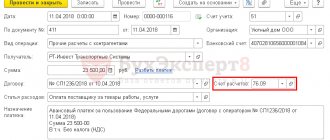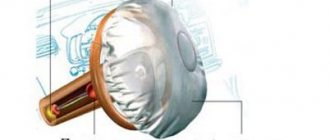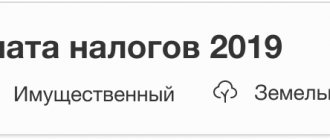“Platon” is an automated payment system for using roads, which has been operating in the Russian Federation since 2015. Vehicle identification occurs automatically. Using a transponder installed in the vehicle, a special assigned identification code is transmitted to a roadside reader. It is a microprocessor-based two-way radio (RFID) operating in the 900 MHz radio frequency range using dedicated short-range communication (DSRC) protocols.
The transponder contains basic information, including identification number, toll services, vehicle type, etc.
The secondary objective of the Platon system is to increase road capacity by introducing tolling on open roads.
Open Road Tolling (ORT) is the collection of tolls solely by electronic means.
The system allows you to make payments directly while the car is moving, which allows you not to delay the movement and make the process almost invisible to the driver and not distract him directly from driving.
ORT is a technological solution that allows you to make payments without stopping the vehicle.
Vehicle identification occurs in two ways:
- Using a transponder installed inside;
- by video image of the license plate.
Although using such a payment system can reduce costs by automating the payment process, on the other hand, a lot of money is required to process image-based data and conduct transactions.
How does the Plato system work in 2021?
What is the Plato system today? What innovations await drivers in 2021?
It’s worth starting with the basic tariff of 1 ruble 90 kopecks per kilometer. System participants are given two payment methods to choose from:
- Route map;
- Using an on-board device.
The route map contains the route of the planned trip, it indicates the starting and ending points, as well as the date of departure of the vehicle. It is possible to additionally specify from 1 to 10 intermediate points. You can apply for a route card yourself through your personal account on the Platon system website or through the mobile application. If you encounter any difficulties with the registration, you can contact the User Information Support Center. Payment for the trip must be made within 24 hours from the moment the card is issued. This can be done in the following ways:
1In the mobile application or personal account.
2In the Customer Information Support Center.
3Through Internet banking, Qiwi e-wallet, Sberbank Online, as well as in Qiwi and Sberbank terminals (but with a commission).
The on-board unit is more suitable for carriers that operate regular flights. For them, preparing a route map turns out to be too expensive due to the time required.
The on-board unit is provided on a free-of-charge basis upon conclusion of the appropriate contract for installation and is subsequently assigned to a specific vehicle. When using it, it is important not to forget that the Platon system requires pre-payment for the trip, so you need to monitor the balance of your account so that it is enough for the entire trip route.
If the funds in the account are not enough to automatically pay for the fare, a fine of 5,000 rubles for the first violation and 10,000 rubles for a second violation will be imposed on the driver and owner of the vehicle.
To avoid a fine, you can set up notifications in your personal account when a certain balance is reached. There is also the possibility of deferred payment. To receive a deferment, the system user must meet a number of conditions:
1Be a resident of the Russian Federation.
2Be registered in the Platon system for more than 2 months.
3Have an on-board unit.
4Do not have unpaid fines or overdue debt for driving on federal roads.
It is also impossible not to note the changes that are planned or have already occurred in 2021. Let's start with the fact that on January 1, 2021, the tax preference within which truckers had the right to a reduction in transport tax depending on the amount paid through the Platon system ceased to apply. Another unpleasant news may be the plans of the Russian government to increase the tariff, scheduled for July 1, 2021 due to the expiration of the moratorium on its indexation.
Road toll system
The system got its name “Plato” from the phrase “payment per ton”. Launched on November 15, 2015. In essence, “Platon” is a road payment system that allows you to maintain them at the proper level and carry out timely repairs. And not only. The Platon payment system includes such components as mobile and stationary control systems, geolocation and automatic calculations, information support, monitoring and data processing centers. The permanent website “Platon.ru” is located on the Internet. There is a 24-hour call center.
Any driver of a heavy vehicle should know how to pay for Platon, because without this, regular flights associated with the transportation of goods can become problematic. What should you consider? In the Platon system, road payments are made using a route card manually or through an on-board device automatically.
What laws govern the operation of the Plato system?
The operation of the Platon system is regulated by a number of regulations and documents developed by the government of the Russian Federation since 2005:
- Transport strategy of the Russian Federation for the period until 2020;
- Federal Law No. 257-FZ dated November 8, 2007 (as amended on December 27, 2018) “On highways and road activities in the Russian Federation”;
- Decree of the Government of the Russian Federation of November 17, 2010 No. 928;
- Decree of the Government of the Russian Federation No. 1191 as amended on June 28, 2018 (fee amount and coefficient);
- transport strategy of the Russian Federation for the period until 2030;
- Federal Law of 06.04. 2011 No. 68-FZ (as amended on December 14, 2015);
- Order of the Government of the Russian Federation dated August 29, 2014 No. 1662-r;
- Decree of the Government of the Russian Federation of May 18, 2015 No. 474.
In addition to the above documents, there are acts directly regulating the entire life cycle and operation of this system:
- Decree of the Government of the Russian Federation of June 14, 2013 N 504 (as amended by Decrees of the Government of the Russian Federation of 05/18/2015 N 474, of 03/11/2015 N 1191, of 15/04/2016 N 310, of 14/11/2016 N 1182, of 20/06/201 7 N 731, as amended by Resolution of the Constitutional Court of the Russian Federation dated May 31, 2016 N 14-P;
- Decree of the Government of the Russian Federation dated December 26, 2016 No. 1483;
- Federal Law No. 257-FZ dated November 8, 2007 (as amended on December 27, 2018) “On highways and road activities in the Russian Federation”;
- Decree of the Government of the Russian Federation of November 17, 2010 No. 928;
- Federal Law of December 14, 2015 No. 378-FZ;
- Decree of the Government of the Russian Federation No. 1191 as amended on June 28, 2018 (fee amount and coefficient);
- Decree of the Government of the Russian Federation of May 18, 2015 No. 474;
- Decree of the Government of the Russian Federation of March 24, 2021 No. 330;
- Decree of the Government of the Russian Federation of November 14, 2021 No. 1182;
- Federal Law of 06.04. 2011 No. 68-FZ (as amended on December 14, 2015);
- Order of the Government of the Russian Federation dated August 29, 2014 No. 1662-r;
- Decree of the Government of the Russian Federation dated April 15, 2016 No. 310;
- Decree of the Government of the Russian Federation dated February 27, 2016 No. 139.
What is the Plato system, its essence and reasons for its development
In 2015, a new tax system was introduced, which was called Plato. Literally its name stands for “payment per ton”. It was created in order to partially return the money that the state invested in road repairs. Due to the fact that there are so many heavy vehicles on the roads, the cost of repair work far exceeds the planned expenditure in the budget.
Plato provides system maintenance. Their main task is to collect money from truck owners who drive on the highways. Then the organization distributes the received amount to different levels. Every year, the Russian state budget receives about 40 billion rubles from the operation of such a taxation system. The activities of the Ros-Tech-InvestTS organization are paid for by the state from the budget.
The Plato system is part of a huge project to replace the road surface until 2021. It is planned to repair about 90% of all roads in the Russian Federation.
Plato on the RosTransNadzor website
On the RosTransNadzor website there is a separate banner charging for Platon. (We described what RosTransNadzor is here.) The page has the following options:
1Get answers to frequently asked questions.
2Possibility to fill out and send a form to appeal an administrative offense.
3Possibility of checking fines for individuals and legal entities.
Read about the ways you can pay for Plato here.
How does the selection of cars that fall into this system work?
If the vehicle’s carrying capacity exceeds 12 tons, then it falls under this taxation system. When determining the weight of a vehicle, the weight of the people in it is taken into account. According to Article 31.1 of Federal Law No. 257-FZ, there is transport that is not subject to this tax system:
- Firefighter, military, medical, municipal transport, as well as ATS vehicles that have a system of special signals.
- Equipment that transports military equipment and weapons.
- Vehicles that are part of the armament of the Ministry of Defense of the Russian Federation.
- Special transport for passengers.
PLATO also has disadvantages
Billing errors and motorists without transponders who cannot pay their bills are the most common problems with the system, Peskov said.
Many people don't pay. And states sometimes charge violation fees that can be hefty—like a $90 fee for failing to pay a $3 toll, leaving some drivers with bills totaling thousands of dollars. We need a better system to ensure payment without these large fines.
He added that in the future he expects the installation of automated tolls on most roads in the Russian Federation.
Of course, no one likes to pay tolls, but when more people want to use a road than it can accommodate, it's much more effective to limit this scarce resource with prices.
"Plato". Price per kilometer
In the Platon system, the price is set for each kilometer of travel on federal highways. This should be taken into account when determining the amount to pay, since if you are driving around federal roads, you do not need to pay for the extra kilometers. In the Platon system, the price per km of track for trucks over 12 tons is currently 1.53 rubles. At the same time, when calculating the total payment through the Platon system, how much a kilometer of travel costs for trucks of different tonnage does not depend on their maximum weight. The need for payment arises when the specified figure exceeds 12 tons. And the cost of “Platon” per 1 km remains the same for all such cars.
How to get a route map?
As stated earlier, the route card is issued for one trip. To receive it, you must specify:
- The entire route from start to finish, with all possible intermediate points.
- State number of the car.
- Evidence of vehicle registration in the registration system.
- Full date and time of start of the trip.
This card can be issued in a mobile application, terminal or Service Center. You can pay in the terminal, your personal account on the website, or by credit card on the website.
How is the Plato on-board device system installed?
Installing the on-board unit does not take much time. After carefully studying the instructions included with the equipment, the car owner can connect it in a few minutes. At the customer support center of the service, after documentation, users are given a device packaged in a box. It comes with a passport and an instruction manual. For free warranty service, you should keep the box and documents indicating that the device was handed over to the user and the date of the event. The device passport must always be with the driver along with the documents for the car. Its absence is equivalent to operating a freight transport without on-board equipment. After receiving the device, vehicle owners must:
- Read the operating instructions.
- Remove the device from the box.
- Treat the mounting area.
- Remove the protective layer of adhesive tape.
- Secure the equipment to the windshield.
- Connect to the cigarette lighter.
The adhesive tape can be replaced with suction cups. However, manufacturers do not recommend using them due to the possibility of the device falling and losing its functionality. To ensure reliable attachment of the suction cup to the glass, it is recommended to pre-treat it with a degreaser. If the truck does not have a cigarette lighter, then to connect the device you need to purchase a 12V-24V adapter. The device is equipped with a battery that allows you to work for some time without connected power. According to the terms of the agreement on the free use of the equipment, the car owner is prohibited from opening the case or changing the batteries. The device picks up satellite signals for two minutes after its launch. Therefore, the relevance of its readings should not be assessed immediately after switching on. Connection to the satellite and stabilization of signals is indicated by constantly burning and non-blinking green indicator lamps.











